
A visual representation of superconductivity
- Subject:
- Chemistry
- Physics
- Science
- Material Type:
- Diagram/Illustration
- Provider:
- Fermi National Lab
- Author:
- Fermi National Lab
- Date Added:
- 11/08/2024

A visual representation of superconductivity

Students are introduced to a unique fluid ferrofluids the shape of which can be influenced by magnetic fields. This activity supplements traditional magnetism activities and offers comparisons between large-scale materials and nanomaterials.Students are introduced to the concepts of magnetism, surfactants and nanotechnology by relating movie magic to practical science. Students observe ferrofluid properties as a stand-alone fluid and under an imposed magnetic field. They learn about the components of ferrofluids and their functionality as they create shapes using magnetically controlled ferrofluids and create their masterpieces.
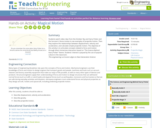
Students watch video clips from the October Sky and Harry Potter and the Sorcerer's Stone movies to see examples of projectile motion. Then they explore the relationships between displacement, velocity and acceleration, and calculate simple projectile motion. The objective of this activity is to articulate concepts related to force and motion through direct immersive interaction based on "The Science Behind Harry Potter" theme. Students' interest is piqued by the use of popular culture in the classroom.
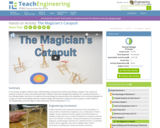
In this activity, students reinforce their understanding of compound machines by building a catapult. This compound machine consists of a lever and a wheel-and-axel. Catapults have been designed by engineers for a variety of purposes from lifting boulders into the air for warfare to human beings for entertainment; the projectiles in this activity are grapes for a magic act. Given the building materials, students design and build their catapult to launch a grape a certain distance.
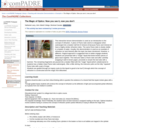
A magical demonstration where a Pyrex tube vanishes in a beaker of mineral oil. Useful demonstration to introduce to concept of refraction (and/or partial reflection).
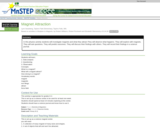
This activity is a magnet science center. Young students learn about magnets through safe, hands on experiences.

Students visualize the magnetic field of a strong permanent magnet using a compass. The lesson begins with an analogy to the effect of the Earth's magnetic field on a compass. Students see the connection that the compass simply responds to the Earth's magnetic field since it is the closest, strongest field, and thus the compass responds to the field of the permanent magnets, allowing them the ability to map the field of that magnet in the activity. This information will be important in designing a solution to the grand challenge in activity 4 of the unit.

This pathway explores the essential concepts of magnets and magnetic fields. The relationship between magnets and the fields they produce is explained, as well as some of the contemporary applications of magnetism in medical diagnostics and quantum mechanics. Problems are provided to check for understanding.
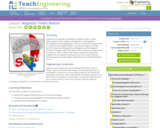
This lesson introduces students to the effects of magnetic fields in matter addressing permanent magnets, diamagnetism, paramagnetism, ferromagnetism, and magnetization. First students must compare the magnetic field of a solenoid to the magnetic field of a permanent magnet. Students then learn the response of diamagnetic, paramagnetic, and ferromagnetic material to a magnetic field. Now aware of the mechanism causing a solid to respond to a field, students learn how to measure the response by looking at the net magnetic moment per unit volume of the material.
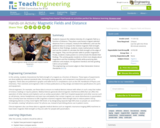
Students measure the relative intensity of a magnetic field as a function of distance. They place a permanent magnet selected distances from a compass, measure the deflection, and use the gathered data to compute the relative magnetic field strength. Based on their findings, students create mathematical models and use the models to calculate the field strength at the edge of the magnet. They use the periodic table to predict magnetism. Finally, students create posters to communicate the details their findings. This activity guides students to think more deeply about magnetism and the modeling of fields while practicing data collection and analysis. An equations handout and two grading rubrics are provided.

In this fun, engaging activity, students are introduced to a unique type of fluid ferrofluids whose shape can be influenced by magnetic fields! Students act as materials engineers and create their own ferrofluids. They are challenged to make magnetic ink out of ferrofluids and test their creations to see if they work. Concurrently, they learn more about magnetism, surfactants and nanotechnology. As they observe fluid properties as a standalone-fluid and under an imposed magnetic field, they come to understand the components of ferrofluids and their functionality.

Students begin working on the grand challenge of the unit by thinking about the nature of metals and quick, cost-effective means of separating different metals, especially steel. They arrive at the idea, with the help of input from relevant sources, to use magnets, but first they must determine if the magnets can indeed isolate only the steel.
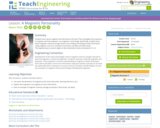
Students learn about magnets and how they are formed. They investigate the properties of magnets and how engineers use magnets in technology. Specifically, students learn about magnetic memory storage, which is the reading and writing of data information using magnets, such as in computer hard drives, zip disks and flash drives.
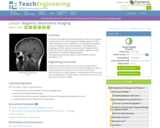
This lesson ties the preceding lessons together and brings students back to the grand challenge question on MRI safety. During this lesson, students focus on the logistics of magnetic resonance imaging as well as the MRI hardware. Students can then integrate this knowledge with their acquired knowledge on magnetic fields to solve the challenge question.

After the unit on Electricity and Magnetism, students are given the opportunity to experience practical applications of the concept as they construct their own headphones and listen to music from their I-pods.
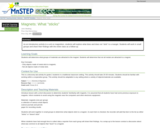
This activity is a discovery lab where students will discover what does and does not stick to a magnet.
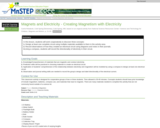
This cooperative classroom activity will allow students to apply their knowledge of magnetism and electricity. The students will create a circuit that lights a flashlight bulb and simultaneously practice the skills of prediction, observation, inferrence, recording, investigation and communication.
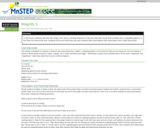
This activity is an introduction to a magnifying glass as a science tool.
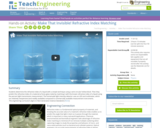
Students determine the refractive index of a liquid with a simple technique using a semi-circular hollow block. Then they predict the refractive index of a material (a Pyrex glass tube) by matching it with the known refractive index of a liquid using the percent light transmission measurement. The homemade light intensity detector uses an LED and multimeter, which are relatively inexpensive (and readily available) compared to commercially available measurement instruments.

Students learn about the difference between temperature and thermal energy. They build a thermometer using simple materials and develop their own scale for measuring temperature. They compare their thermometer to a commercial thermometer, and get a sense for why engineers need to understand the properties of thermal energy.